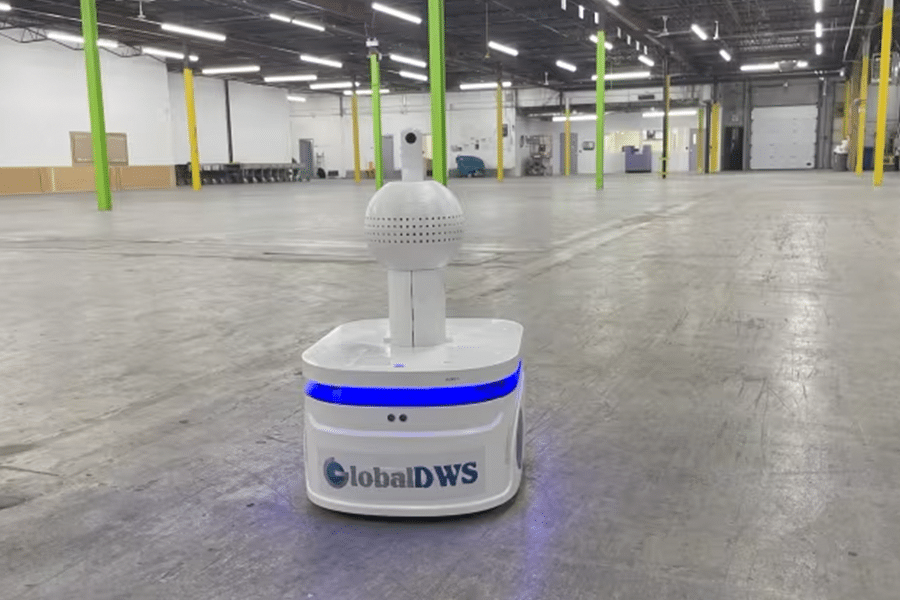
A robot with surveillance capabilities that federal public servants call “the little robot” is now roaming federal offices in Canada. This blog post dives into the intriguing world of these robots, shedding light on their functions, the reactions they are stirring among public servants, and what this means for the future of workplace surveillance.
The Emergence of Spy Robots
What Are These “Spy” Robots?
Spy robots are autonomous machines equipped with advanced surveillance technology. These robots can move around freely, capturing video and audio, and even detecting specific activities or behaviors. In the Canadian federal government, such robots have been introduced to enhance security and monitor compliance within office spaces.
How Did They Come Into Existence?
The Canadian government has always been proactive about integrating advanced technology to enhance operational efficiency. With rising concerns about data security and workplace safety, the introduction of surveillance robots seemed like a logical next step. These robots are designed to provide an unobtrusive yet effective means of maintaining security within federal offices.
Initial Reactions from Public Servants
Not surprisingly, the presence of these spy robots has not been universally welcomed. Many public servants express unease and concern over potential privacy infringements. Despite being informed about the robots’ objectives, the idea of constant surveillance has sparked a debate on the ethics and implications of such technology in a professional setting.
Advantages of Surveillance Robots
Enhanced Security Measures
One of the primary benefits of deploying these robots is the heightened security they bring. With the ability to monitor activities 24/7, these robots can quickly identify and report any suspicious behavior. This continuous surveillance ensures that potential threats are detected and addressed promptly, thereby safeguarding sensitive government data.
Monitoring Compliance
Another significant advantage lies in the robots’ ability to ensure compliance with workplace regulations. Whether it’s ensuring that restricted areas remain off-limits or verifying that safety protocols are being followed, these robots act as vigilant overseers. This capability can lead to a more disciplined and secure work environment.
Data Collection and Analysis
These robots are not just eyes and ears; they are also repositories of valuable data. By capturing and analyzing patterns of movement, activities, and interactions within the office, they provide insights that can help optimize office layouts, improve workflow efficiency, and even enhance employee productivity.
Concerns and Controversies
Privacy Invasion Fears
The most significant concern among public servants is the potential invasion of privacy. The idea of being constantly watched can create a sense of distrust and discomfort. Employees worry that their every move is being scrutinized, leading to a stressful and less productive work atmosphere.
Ethical Implications
There are also broader ethical questions about the use of surveillance robots. Is it fair to subject employees to constant monitoring without their explicit consent? What safeguards are in place to ensure that the data collected is not misused? These questions highlight the need for clear guidelines and transparent policies regarding the use of such technology.
Impact on Employee Morale
The introduction of these robots has had a noticeable impact on employee morale. While some appreciate the added security, others feel that their autonomy is being compromised. This divide can lead to a fragmented work environment where trust between employees and management is eroded.
The Future of Surveillance in Workplaces
Expanding Beyond Federal Offices
Given the mixed reactions, will other sectors follow suit and adopt surveillance robots? It’s likely that as technology advances and becomes more affordable, industries beyond the federal government may explore similar solutions. However, the implementation will require careful consideration of ethical and privacy concerns.
Balancing Security and Privacy
The key challenge moving forward will be finding a balance between enhancing security and respecting employee privacy. Establishing clear policies, obtaining employee consent, and ensuring transparency in data usage are crucial steps in achieving this balance.
Technological Advancements
The evolution of AI and machine learning will undoubtedly lead to more sophisticated surveillance robots. Future models could include advanced features like facial recognition, predictive analytics, and even emotional detection. While these advancements offer exciting possibilities, they also necessitate ongoing discussions about their ethical use.
The deployment of spy robots in Canadian federal offices marks a significant step in the integration of advanced technology into workplace environments. While they offer numerous benefits in terms of security and compliance, their presence also raises critical questions about privacy, ethics, and employee morale.
Read the full article from CBC.





